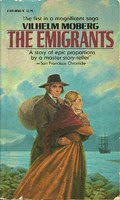
My mom, Polly (left) and her sister, Janice.
 Katherine met her future husband, J.B. Akin, on August 20, 1929 and they were married exactly two years later in 1931. Ten years married, she is shown here with her two daughters, Janice and Polly. The photo is marked Thanksgiving 1941; Katherine is 31 years old, a young woman still, but at this point in her life she had already experienced a great deal of personal loss.
Katherine met her future husband, J.B. Akin, on August 20, 1929 and they were married exactly two years later in 1931. Ten years married, she is shown here with her two daughters, Janice and Polly. The photo is marked Thanksgiving 1941; Katherine is 31 years old, a young woman still, but at this point in her life she had already experienced a great deal of personal loss. Jay or J.B. to his friends. Moredaddy to us, the Atticus Finch of our family.
Jay or J.B. to his friends. Moredaddy to us, the Atticus Finch of our family.
 Beautiful, controversial, and blog worthy because it's different. Two vikings, presumed dead, are left behind after a bloody massacre. With no hope of a rescue, they are faced with the basic need to survive in the North American wilderness during the year 1007. Volnard and Orn (played by the director himself) come into contact with Celtic monks, Abenaki Indians, and wild animals. One of the men experiences a Christian conversion and begins to develop a conscious while the other goes deeper into his primal nature.
Beautiful, controversial, and blog worthy because it's different. Two vikings, presumed dead, are left behind after a bloody massacre. With no hope of a rescue, they are faced with the basic need to survive in the North American wilderness during the year 1007. Volnard and Orn (played by the director himself) come into contact with Celtic monks, Abenaki Indians, and wild animals. One of the men experiences a Christian conversion and begins to develop a conscious while the other goes deeper into his primal nature.


